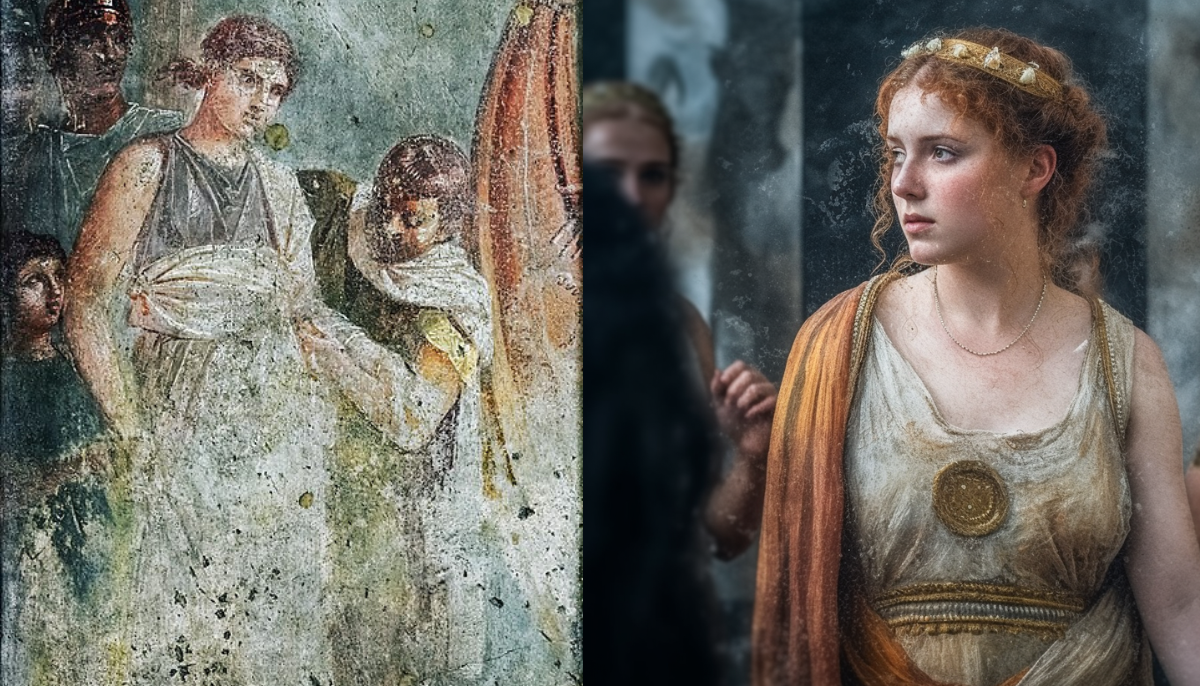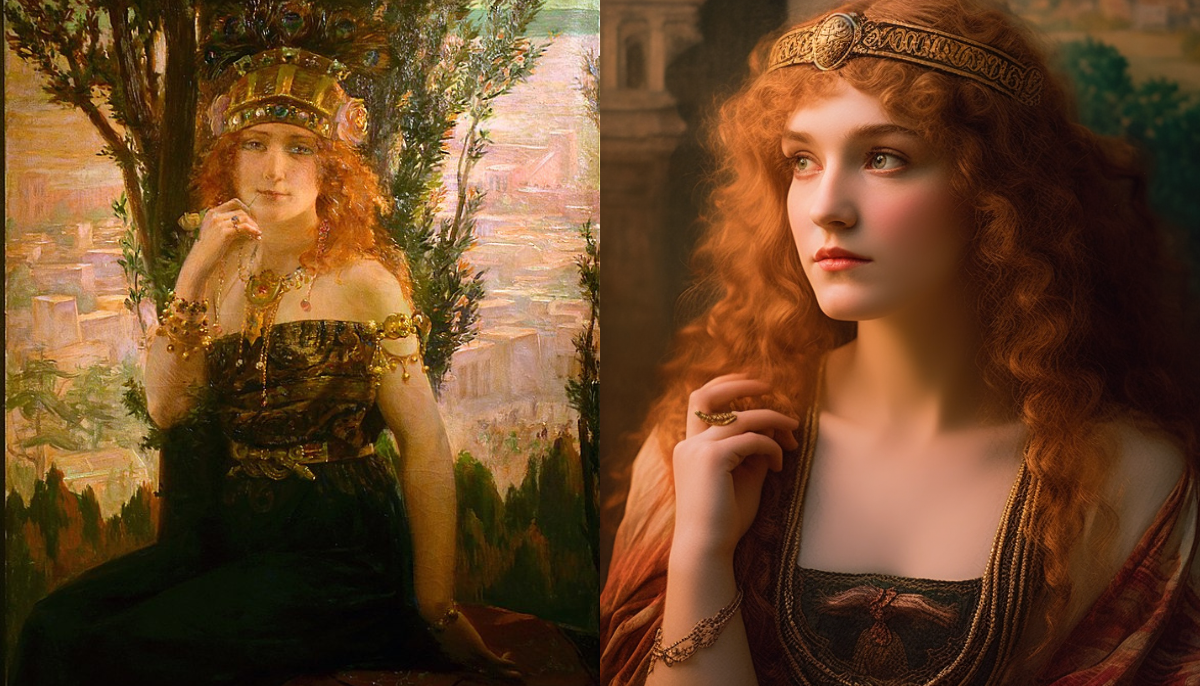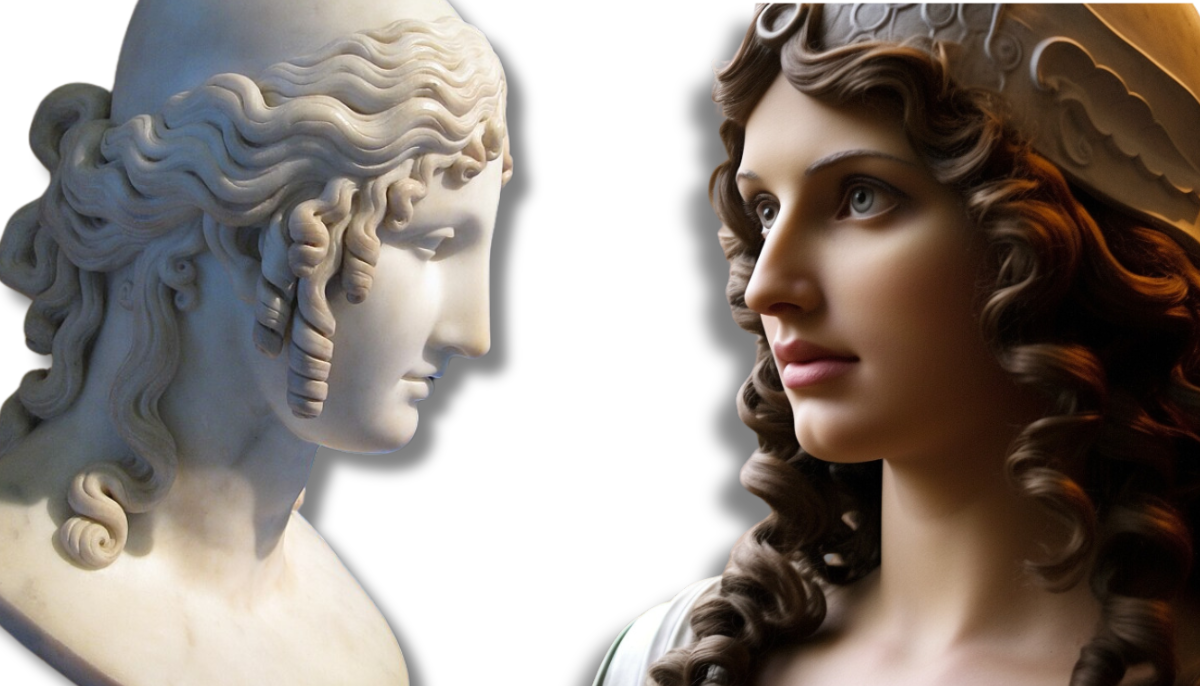Helen of Troy, whose face famously launched a thousand ships, has captivated storytellers and artists for centuries. Yet, despite her pivotal role in Greek mythology and the epic Trojan War, her exact features remain a mystery.
This article explores the elusive beauty of Helen—a woman whose divine lineage and legendary allure have been etched into history without a single definitive portrait.
Join us as we piece together ancient descriptions and use AI recreations to finally answer the question: What did Helen of Troy look like?
What did Helen of Troy look like in Greek mythology?
When exploring the legendary figure of Helen of Troy, it’s fascinating to note that despite her fame, ancient texts offer scant details about her physical appearance.
Helen’s beauty is legendary, yet descriptions from Greek mythology are minimal and largely symbolic.
Homer’s description of Helen of Troy
The revered ancient Greek poet Homer provides minimal physical description of Helen in his epic works, the Iliad and the Odyssey.
Helen is referred to with epithets such as “white-armed,” “long-dressed,” and “lovely-haired.”
These terms, while evocative, offer little in the way of concrete details, focusing instead on her elegance and the ethereal quality of her beauty.
other descriptions of Helen in Greek mythology
Beyond Homer, other ancient texts provide glimpses into Helen’s appearance, albeit still sparingly. In Works and Days, a poem by Hesiod, Helen’s hair is again highlighted as “lovely,” a recurring theme that seems to underscore her allure.
The Kypria, a now mostly lost epic poem, refers to Helen as “a wonder for mortals,” suggesting her beauty was beyond ordinary human standards.
Sappho, an iconic Greek poetess, describes Helen as “blonde-haired,” though the exact hue, ranging from blondish brown to reddish blonde, is debated among scholars.
Additionally, Helen is sometimes described as having “gleaming blue eyes.” This description adds a rare color detail to the otherwise vague depictions of her beauty.
recreation of Helen of Troy, based on a Roman fresco

A side-by-side comparison of two depictions of Helen of Troy. On the left is a section of the ancient fresco from the House of the Tragic Poet in Pompeii, dating back to 79 AD.
This part of the fresco shows Helen, with a solemn expression, wearing a classical Greek robe. The colors are subdued, with earthy tones, and the details are indicative of Roman wall painting styles with some fading due to age.
On the right is the modern recreation using AI. Helen has a more vivid presence, with clearer details and brighter colors. She has reddish-blonde hair adorned with a golden hairpiece, a gentle expression, and is clad in a Greco-Roman style garment. She bears a necklace, and her clothing is accented with gold, suggesting nobility.
Helen of Troy, based on artwork

On the left, Sandys’ original painting captures Helen with an intense gaze, her curly auburn hair adorned with classical accessories, emphasizing the romanticism of the Victorian era with rich detail and a strong, almost melancholic expression.

The image features Helen of Troy, as envisioned by Gaston Bussière. On the left, Bussière’s original oil painting portrays Helen nestled in a lush, verdant setting, her fiery red hair and regal attire suggesting a blend of natural beauty and royal luxury, typical of the Symbolist movement.
On the right, a modern rendition inspired by Bussière’s work transforms the classical portrait into a more photorealistic image. This updated version of Helen retains the fiery red curls and noble demeanor but with a softer, more introspective expression.
Helen of Troy’s real face, based on a Renaissance marble bust

A marble bust of Helen of Troy by the renowned neoclassical sculptor Antonio Canova was crafted in 1811 with its modern, colorized interpretation.
The left side displays Canova’s sculpture, capturing Helen’s profile in the smooth, cool marble characteristic of the neoclassical style that sought to revive ancient Greco-Roman aesthetics. On the right, the colorized rendition offers a lifelike interpretation of Canova’s Helen.
Why Helen of Troy’s appearance was secretive
Helen of Troy’s appearance is a well-kept secret of history. Being Zeus’s daughter, her divine beauty is often not described in detail. This lack of description elevates her status; detailing her features might reduce her allure.
Instead, Homer and Hesiod use broad strokes, like “pale skin” and “beautiful hair,” which were beauty markers of the time, implying wealth and nobility.
The vague descriptions add to Helen’s legend, leaving much to the imagination. This approach creates a powerful lore, as each person envisions Helen in their way.
Check out our article on Alexander the Great to see another historical figure brought to life through the lens of modern technology.





